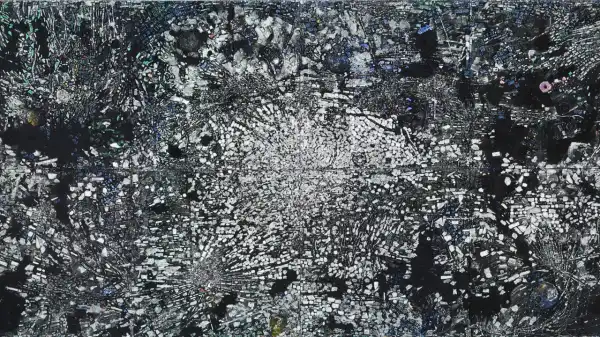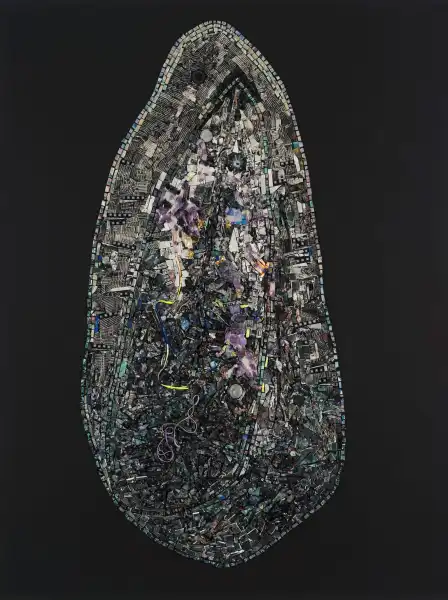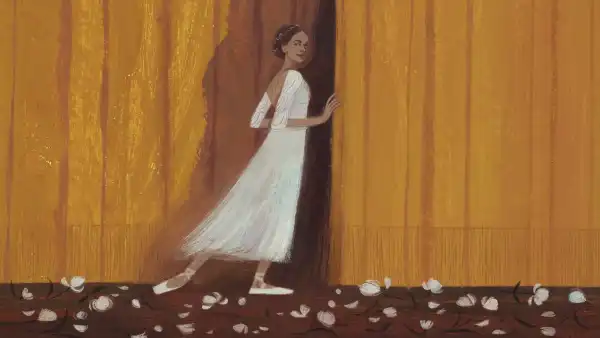
Save this storySave this storySave this storySave this story
He layered the paint and combed it with an Afro pick. Or he froze it and smashed it, reassembling the fragments into new wholes. Like an alchemist, he altered its texture with precisely chosen potions. Like a wizard, he filled it with ash, blood, and bone fragments. His studio on Lispenard Street in Tribeca overflowed with tools, and his notebooks bubbled with the delight of a mad scientist. “TRUTH IS THE PROCESS OF DESTRUCTION,” he raves in one entry; in another, a transformative residency at Xerox unleashes an explosion of gospel chants: “I’m on my way to glory / a child of the plane.” In the nineties, he achieved that glory by creating his “tesserae” paintings, arranging bits of hardened acrylic into glittering, free-form mosaics. One of them, called “Black Monolith II (for Ralph Ellison),” greets you as soon as you enter The Messenger, his new retrospective at MOMA—a dark vision, decorated with rainbow squares, resembling a male silhouette, with a small razor where you’d expect a mouth.
Jack Whitten spent his life giving abstraction a soulful quality. “I believe there are sounds we’ve never heard,” he once said. “I believe there are colors we’ve never seen. And I believe there are feelings we’ve yet to experience.” He proved this time and time again, from the sixties, when he channeled the anger and sadness of the civil rights struggle into the language of abstract expressionism, to his death in 2018, just three years after Barack Obama awarded him the National Medal of Arts. MOMA’s exhibition highlights his celebrated tesserae works, like his twenty-foot tribute to the victims of the 9/11 attacks on the World Trade Center, which he witnessed, presenting them as the capstones of a lifetime of experimentation. It’s a fascinating, deeply researched look at a career that unfolded in one long eureka moment.
Whitten reconciled creative impulses that often seemed diametrically opposed. Michelle Kuo, who organized the exhibition, argues in the catalogue that Whitten created a third abstraction between “gestural painting and the grid,” synthesising Jackson Pollock and Piet Mondrian. He approached painting as a science, but also flirted with spiritualism, drawing inspiration from the ritual effectiveness of African sculpture. Perhaps the greatest contradiction he overcame was that he was a black artist who did not practice figuration—a position that was anathema to both whites and blacks in the art world in his early years. In all this, his guiding light was jazz, which he unsuccessfully pursued as a tenor saxophonist before embracing it as a philosophy. Committed to the experimentalism of music, its combination of composition and improvisation, and its universalism rooted in African-American specificity, he was the rare black artist for whom analogy was more than a reductionist cliché.

“Black Monolith VII, Du Bois's Legacy: For W. E. Burghardt” (2014). Photograph by Jonathan Muzikar/The Museum of Modern Art, New York
At the entrance to the exhibition is Homecoming: For Miles (1992), a painting of hundreds of square acrylic
Sourse: newyorker.com






